Animals & Humans: A Relationship Preserved in Archives – Part Two
Animals & Humans: A Relationship Preserved in Archives – Part Two
This is part two of a three-part blog series on “Animals & Humans: A Relationship Preserved in Archives”. In part two, let’s take a look at how animals have helped provide sustenance to humans through farming, hunting, and fishing.
By Megan Lockhart, Archives Technician
***Read last week’s blog article for part one of this series.
Farming
When we think of the equipment used in modern farming, many of us think of mechanical equipment like tractors, combines, sprayers, rippers, and the list goes on. Modern equipment can be used without the need for some source of strength to pull them. Of course, historically this was not the case. Before we had farm equipment powered by engines, farmers had to rely on animals to assist with their daily tasks. Horses and oxen were a necessity for many aspects of farming, from plowing the fields to harvesting, these heavyweight animals were used to pull and sometimes help with operating equipment, and with the transportation of goods and products. Without the assistance of these animals, crop farming at a large scale was not very feasible.
Animal products are of course another form of sustenance for humans, from milk to eggs, and animal meat, humans rely on animals for a lot of our food. We also obtain other useful and essential products from animals, such as wool from sheep. Check out some photos of Oxford County farm animals in action below, from the collection at the Oxford County Archives.
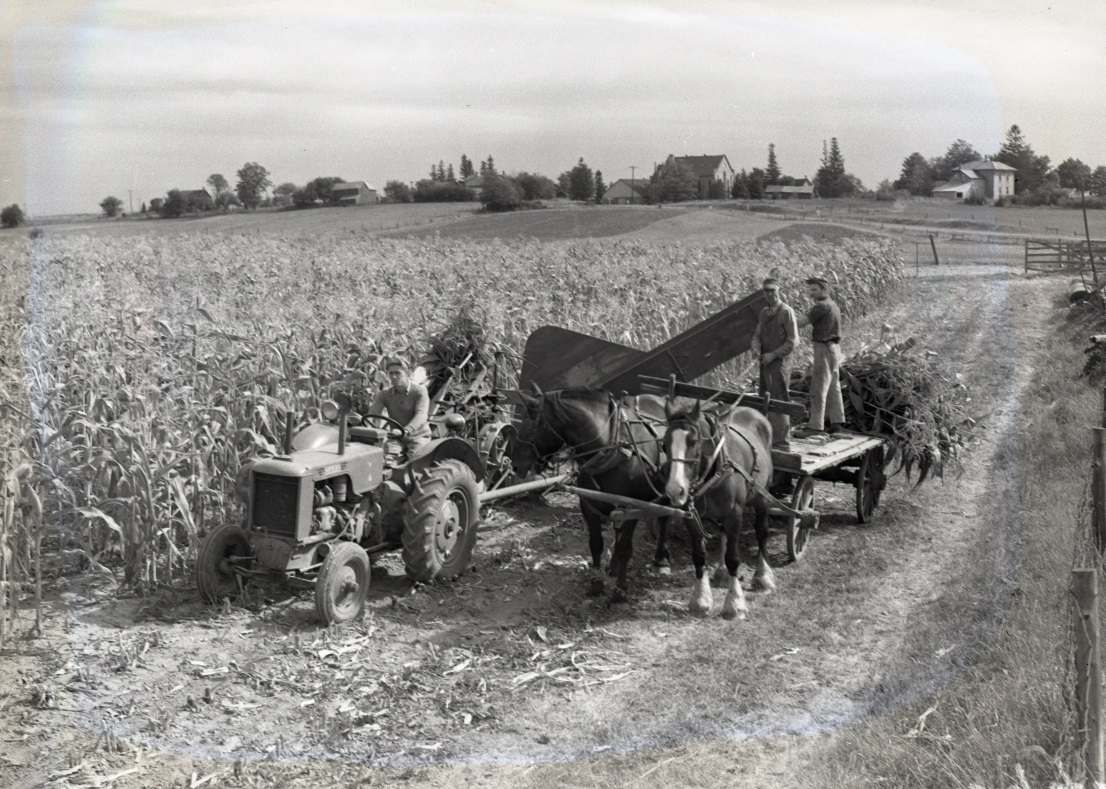
Farmers clearing a cornfield with a corn loader driven by Tom Way on the farm of Timothy Dunham in Salford, Ontario. 25 September 1948.
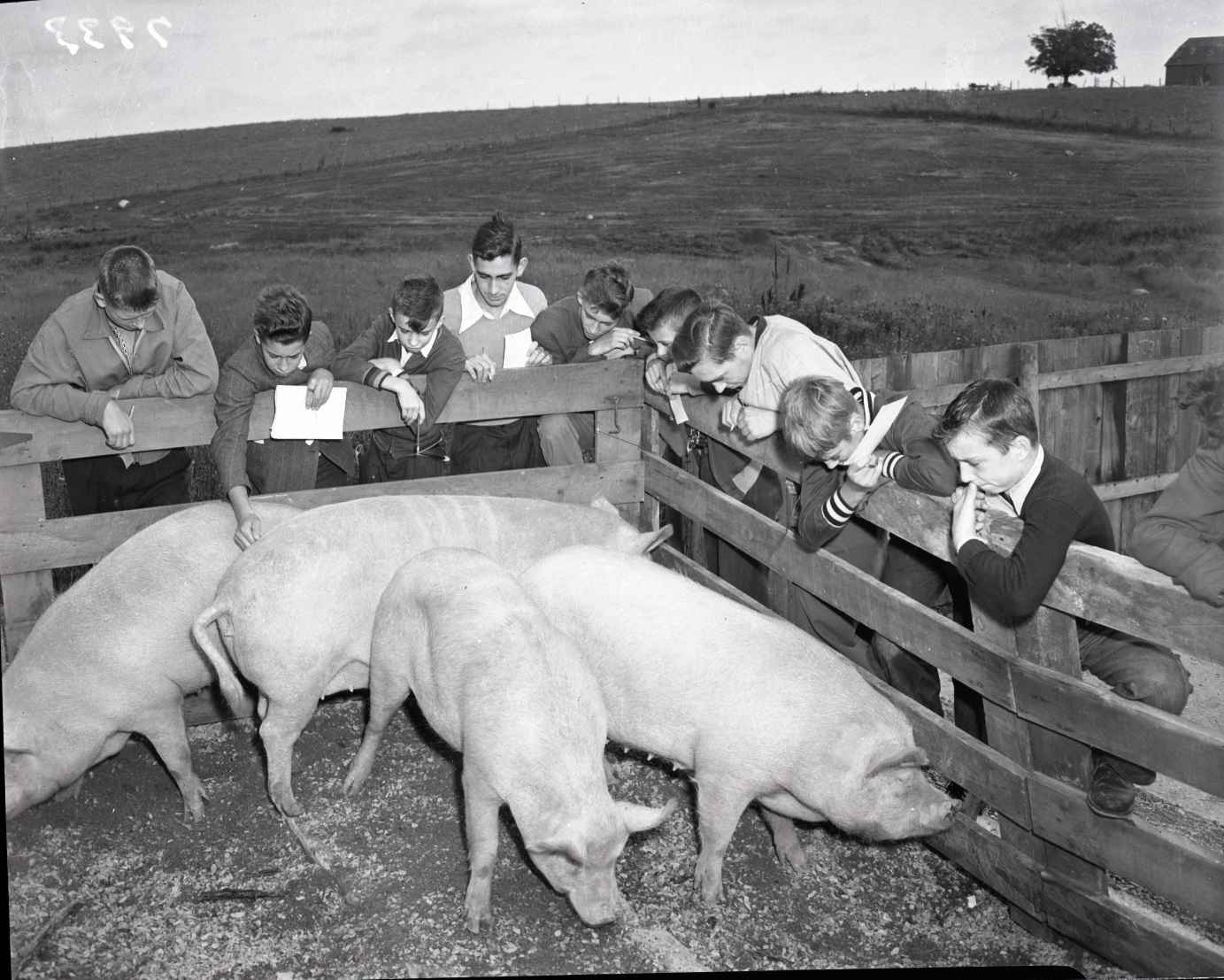
Group of children and youths observing pigs in a sty on a farm. Circa 1953.
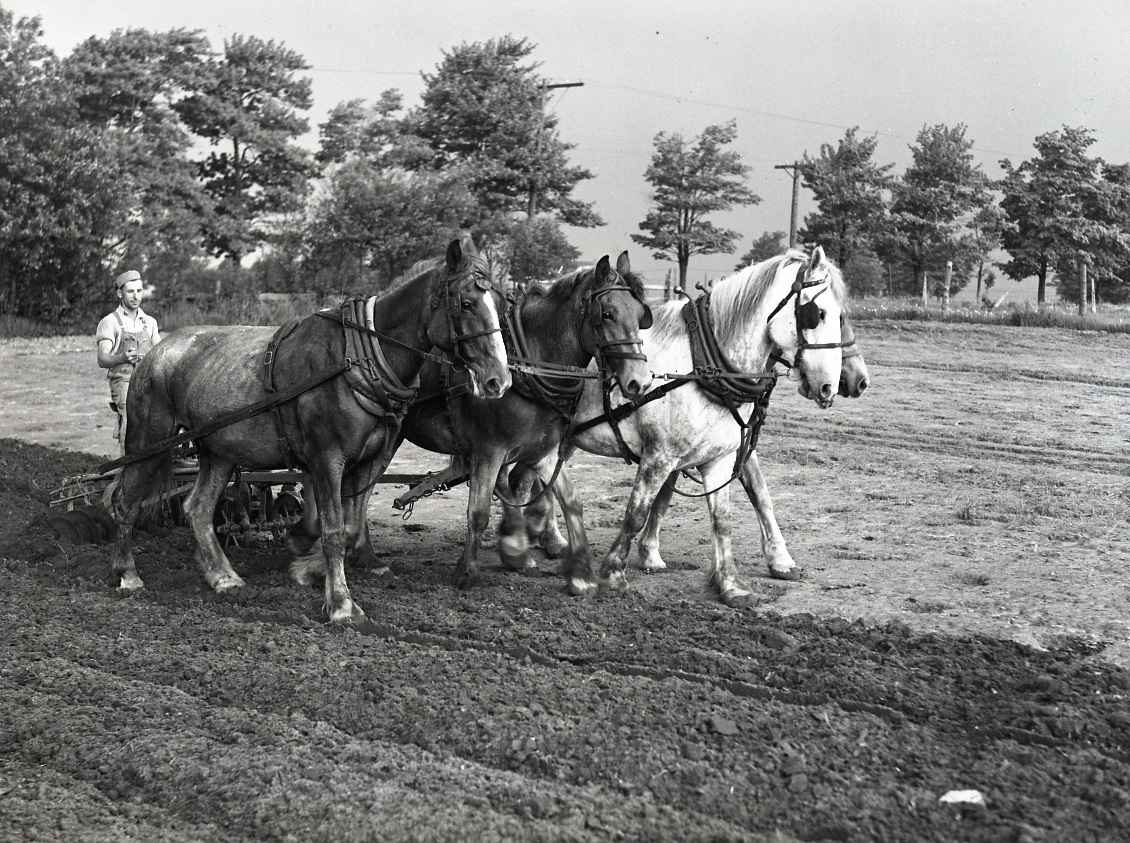
A farmer driving a four horse-drawn plow through a field in Oxford County. Circa 1946.
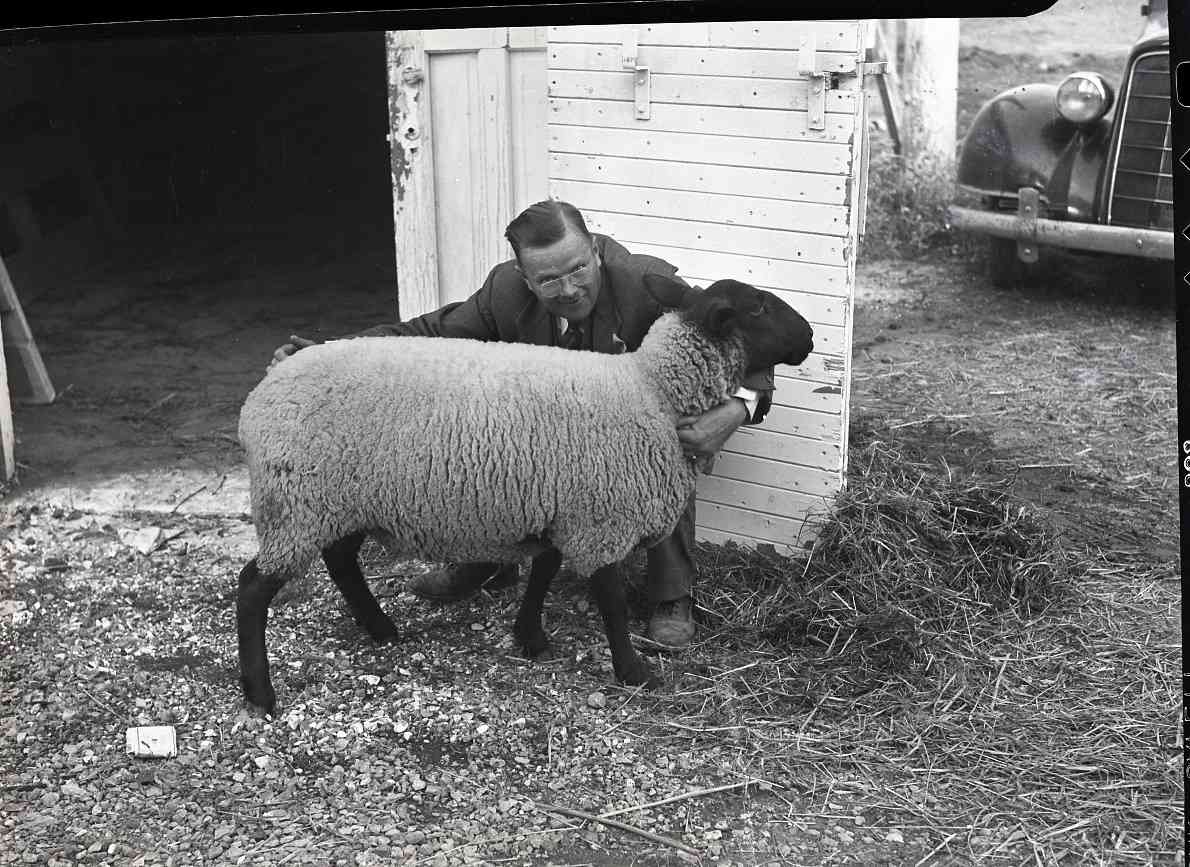
A man measuring the length of a sheep with his arms, on an unknown farm. Circa 1947.
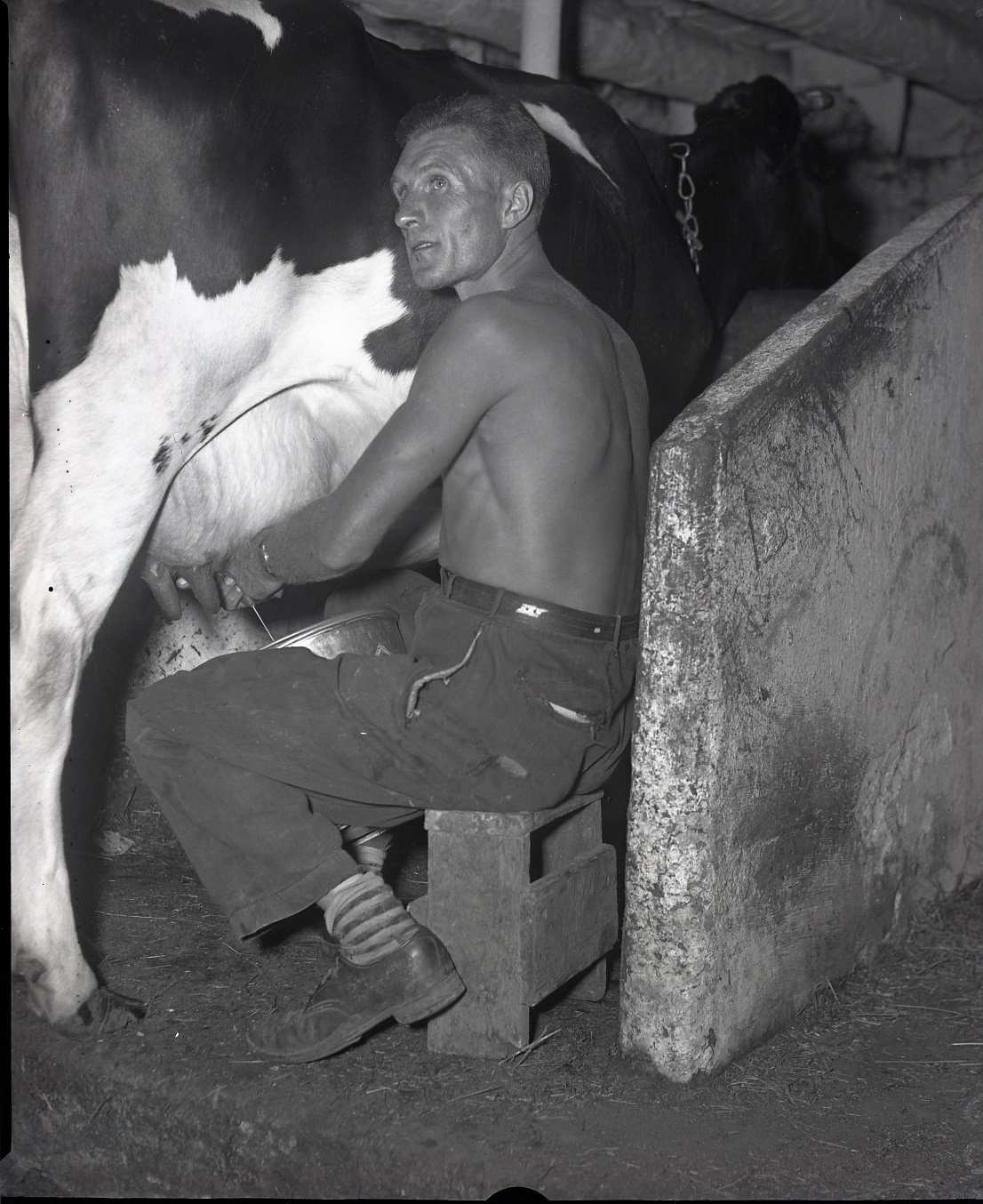
An unidentified man milking a cow in a barn. Circa 1940s.
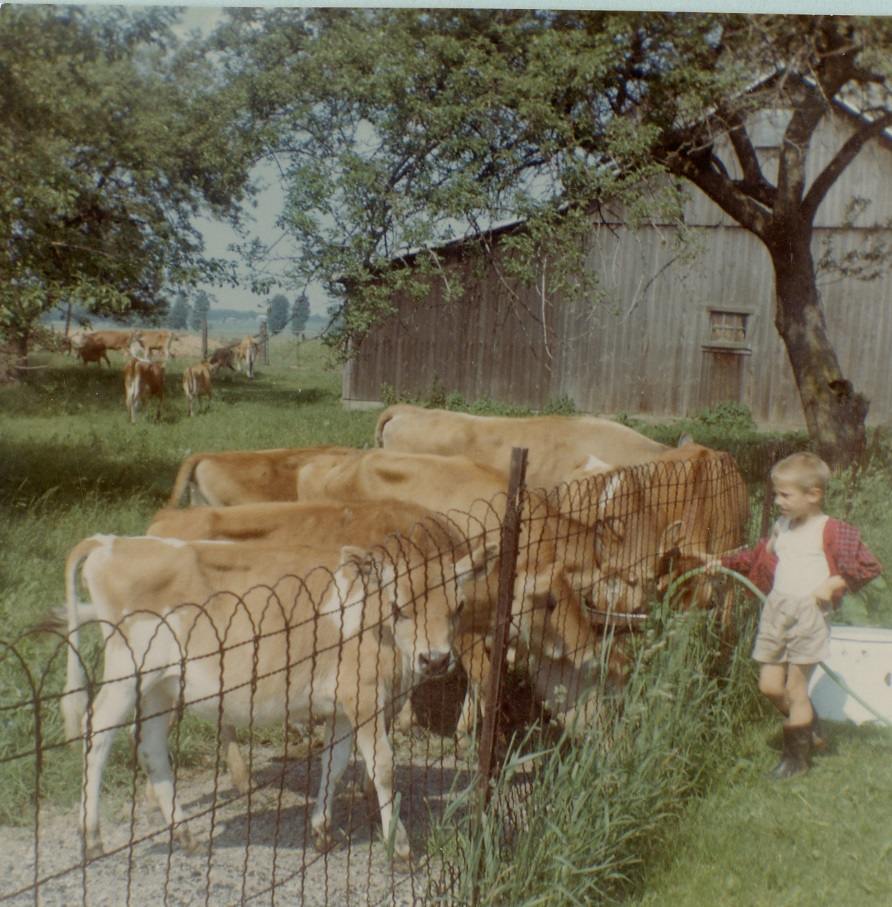
Peter Rosenburg, age 6, watering cows on a farm, 1967. From the Princess Elizabeth Women's Institute (North Oxford District) Tweedsmuir volume 6.
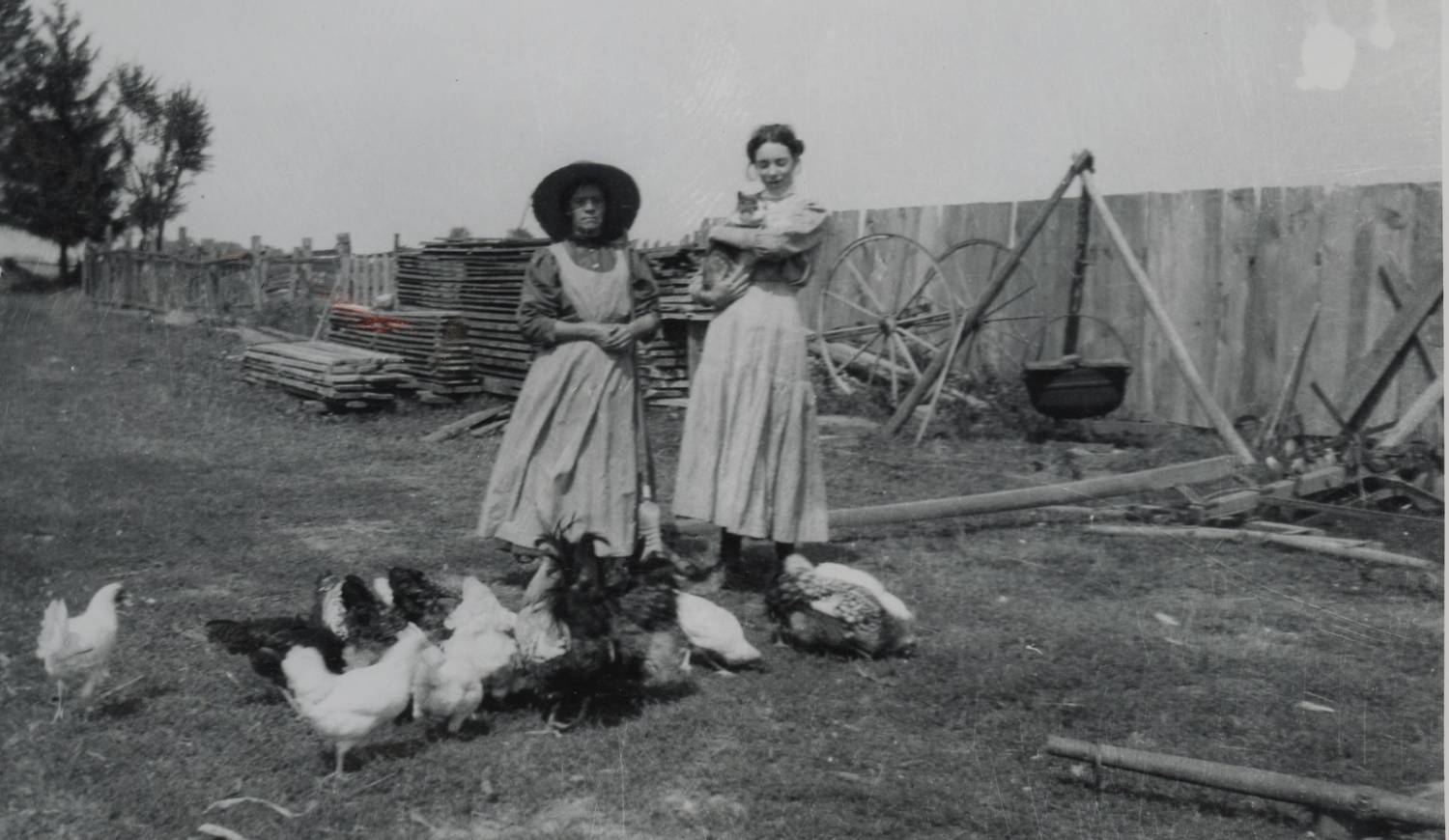
"Mrs. Stewart" and daughter Bessie making soap in the farmyard with chickens at their feet. Bessie is holding a cat in her arms. Circa 1908-1912. From the Plattsville Women's Institute Tweedsmuir volume 3.
Hunting and Fishing
Domesticated animals aren’t the only types of animals that provide sustenance to humans. The human species has been hunting wild animals for over 1 million years for food, but also for materials for clothing, and even tools! Humans also fish in the waterways, lakes, ponds, and oceans. Our archival collection is filled with photographs of people fishing in and around Oxford County. We also have a “Wild Life Cook Book” in our collection that includes recipes for hunted game that we are familiar with currently, such as deer, rabbit, partridge, duck, etc., along with game that many of us no longer consume in North American culture, like muskrat or squirrel. Peruse some of the recipes from the cookbook below and some of our favourite fishing photographs from the collection.
*The “Wild Life Cook Book” was compiled by the Oxford Fish & Game Protection Association in Woodstock, Ontario. Published by Gateway Publishing Co. Ltd. (Winnipeg, Manitoba, Canada). Circa 1970s.
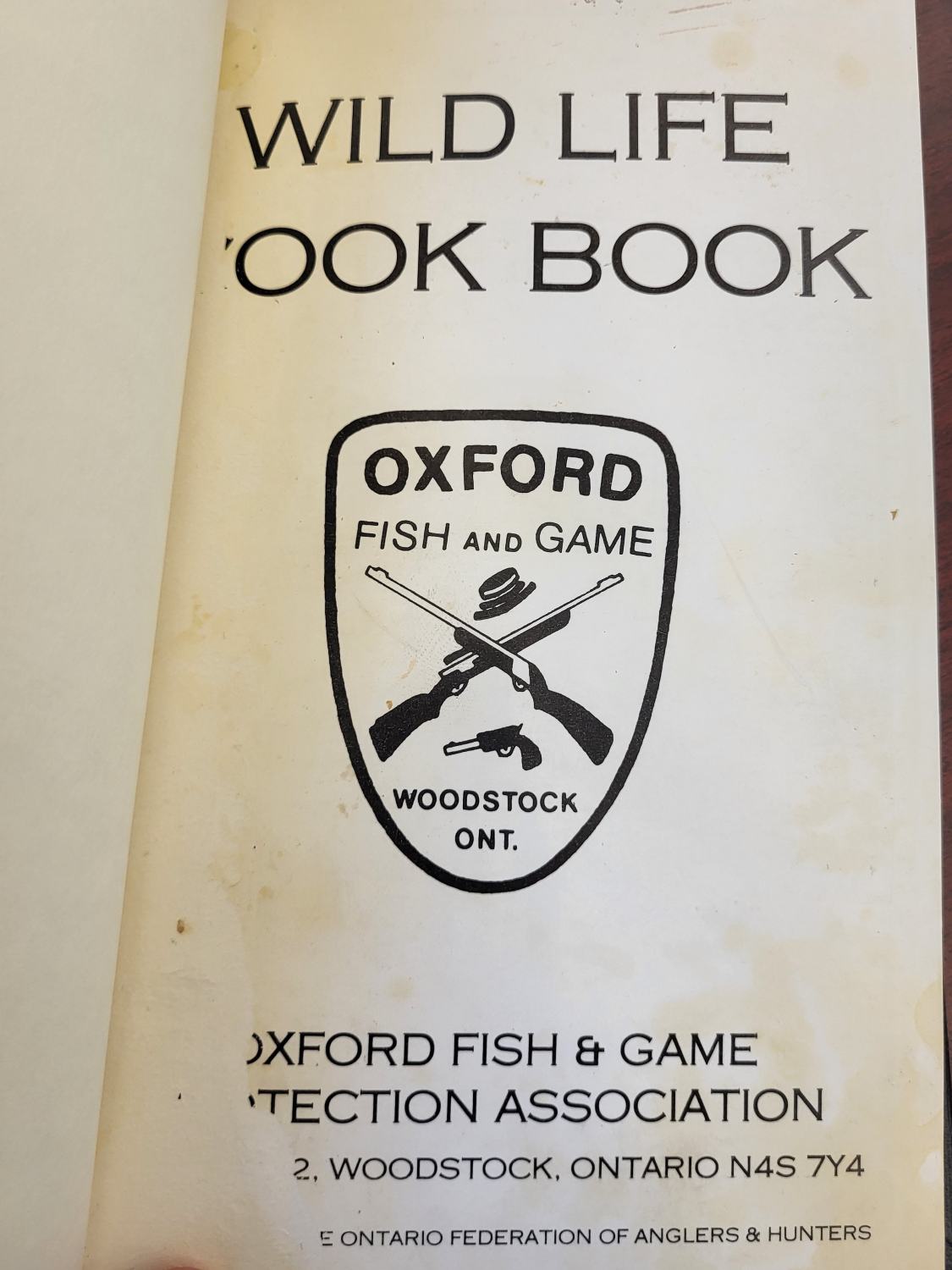
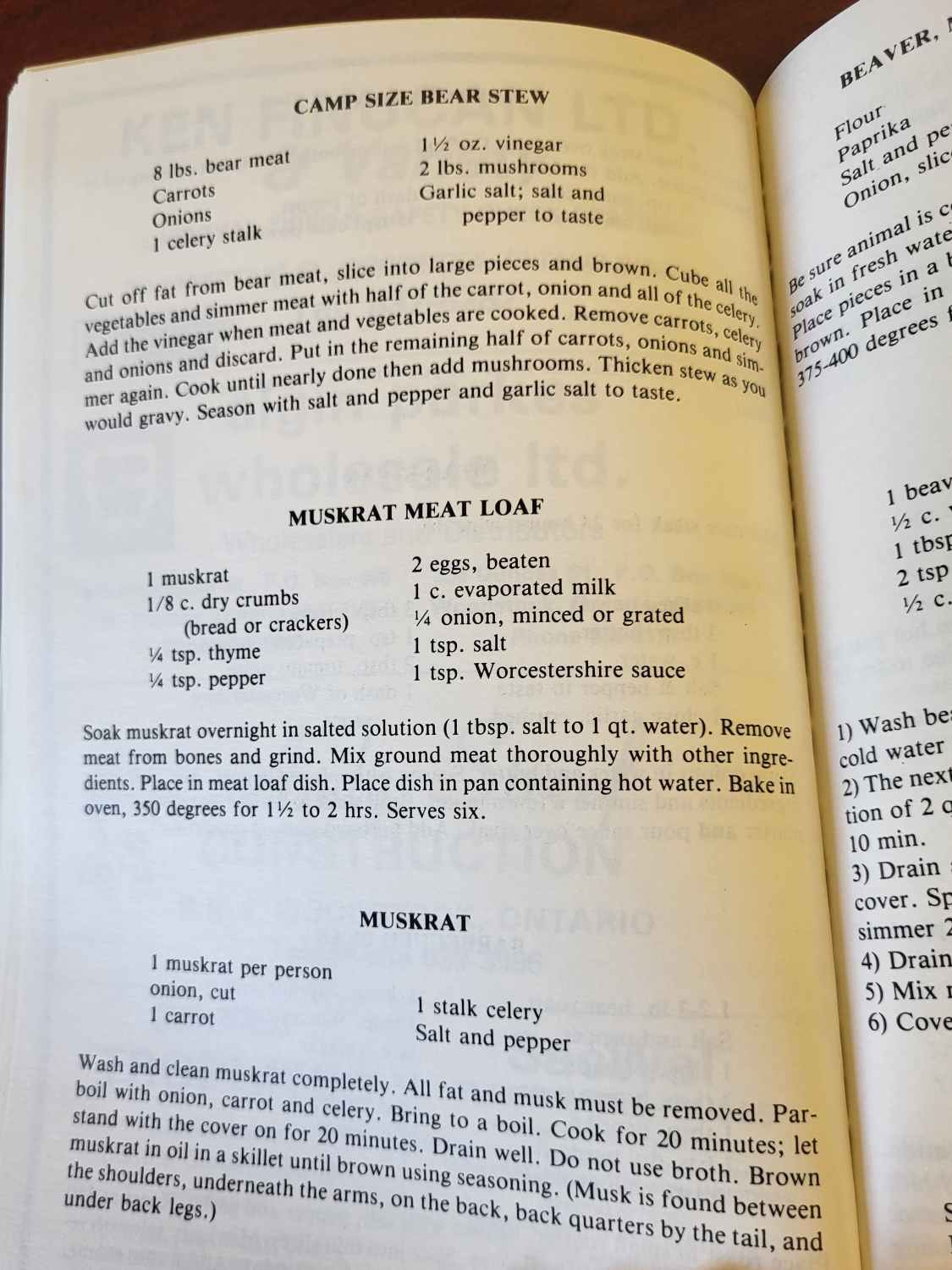
Recipes for "Camp Size Bear Stew", "Muskrat Meat Loaf", and instructions on how to cook a muskrat including removing the fat and musk glands, then boiling and cooking the muskrat in a skillet.

Recipes for cooking beaver, muskrat, porcupine, rabbit, and raccoon; including a recipe for "sweet pickled beaver" and beaver stew that can be made "in the bush".

Two boys posing with fishing rods and the fish they caught in front of an unknown creek or river. Circa 1949.
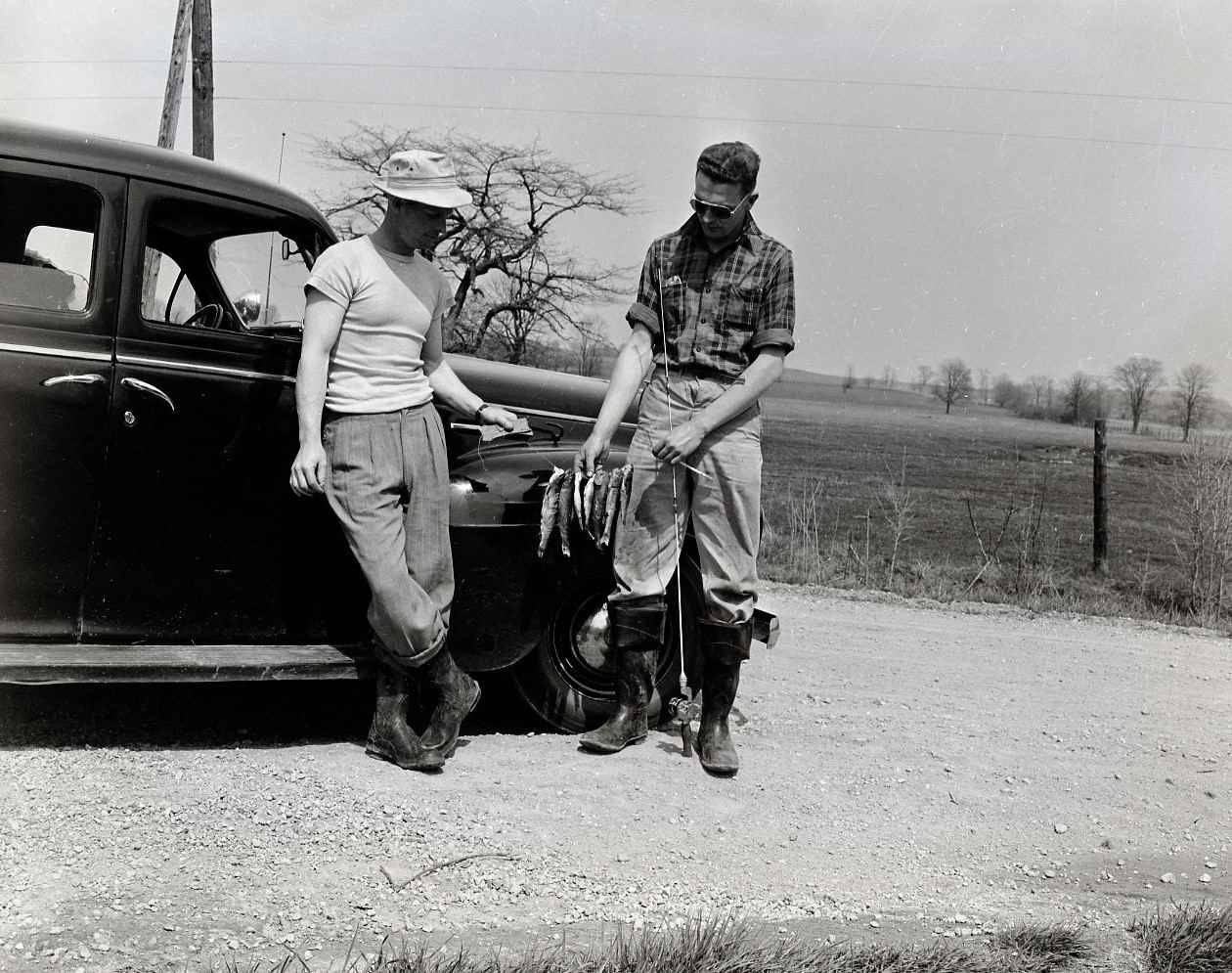
Two men posing with a string of fish they caught. Circa 1949.
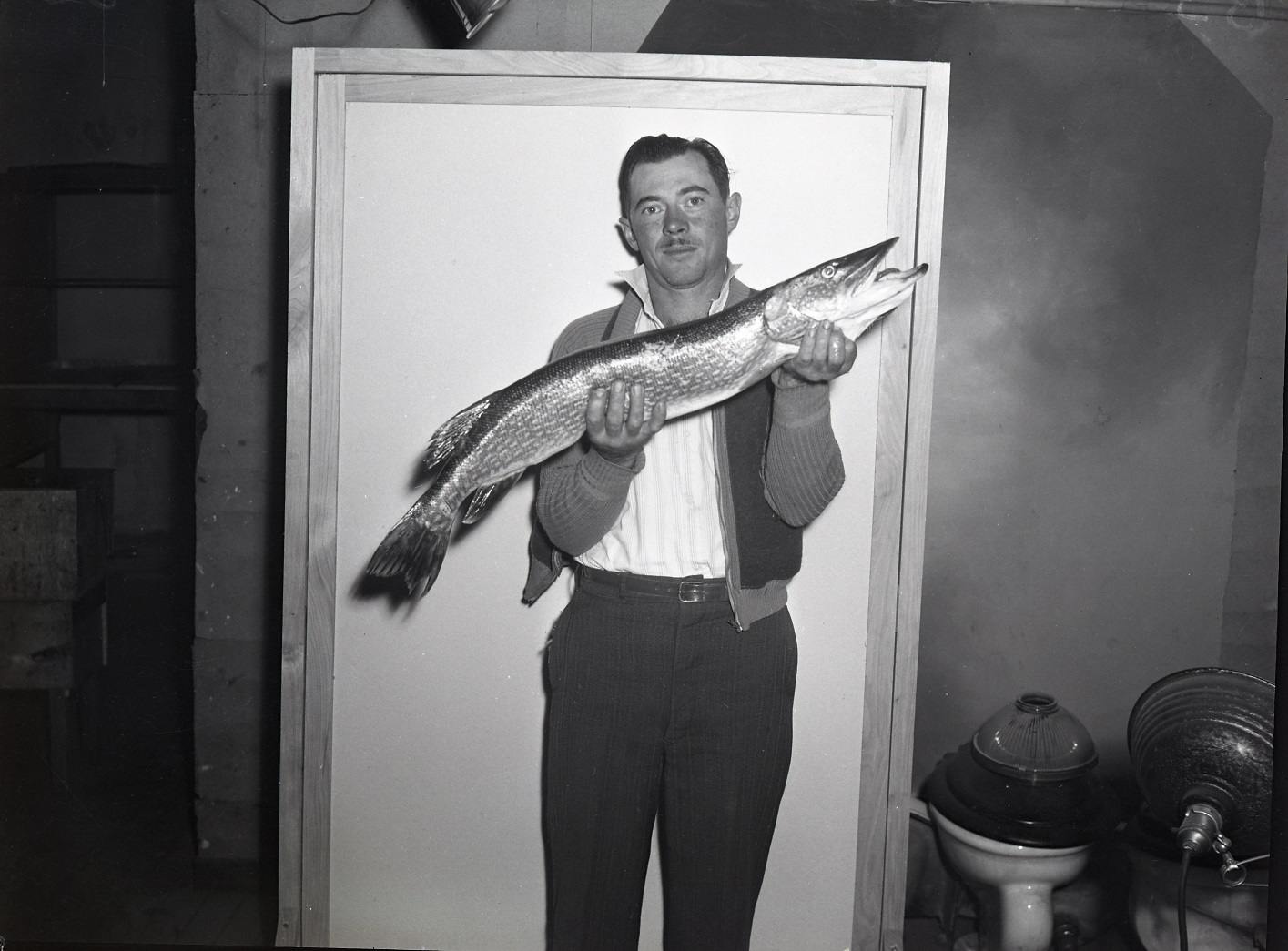
An unidentified man posing with a large pike he caught. Circa 1940s.

A postcard featuring a woman fishing on the Thames River near Woodstock, Ontario. Circa 1910s.
Check out next week’s blog article for “part two” of this three-part series: “Animals & Humans: A Relationship Preserved in Archives”.
